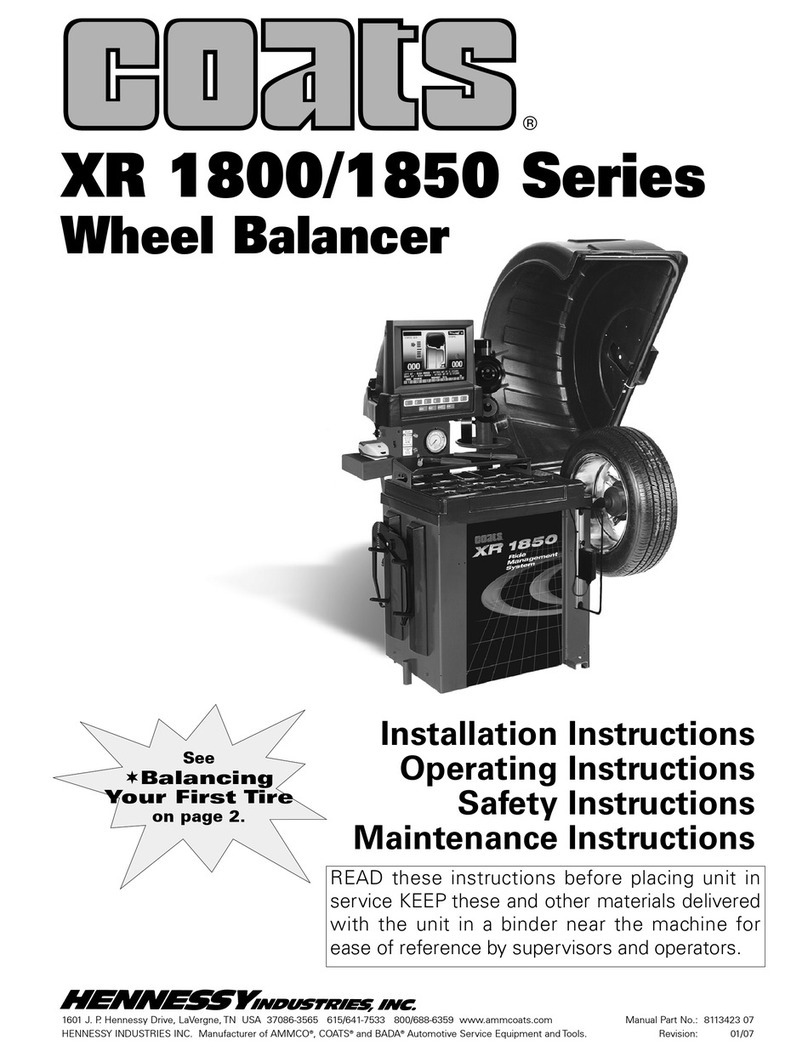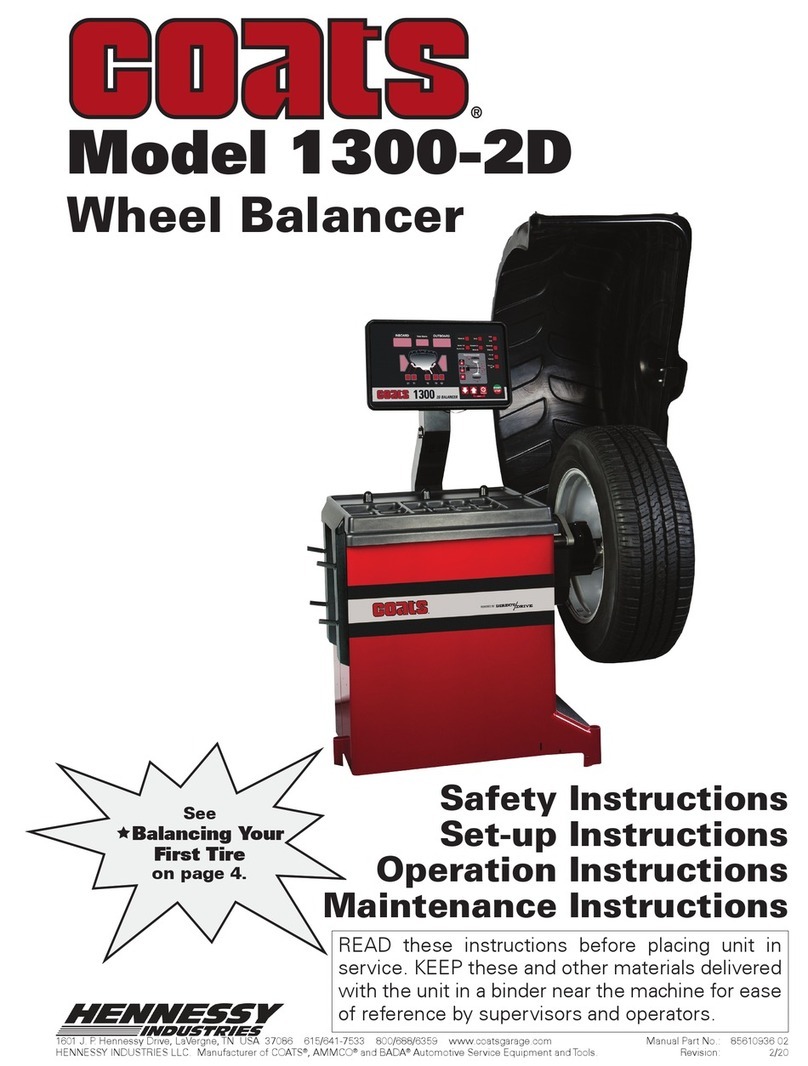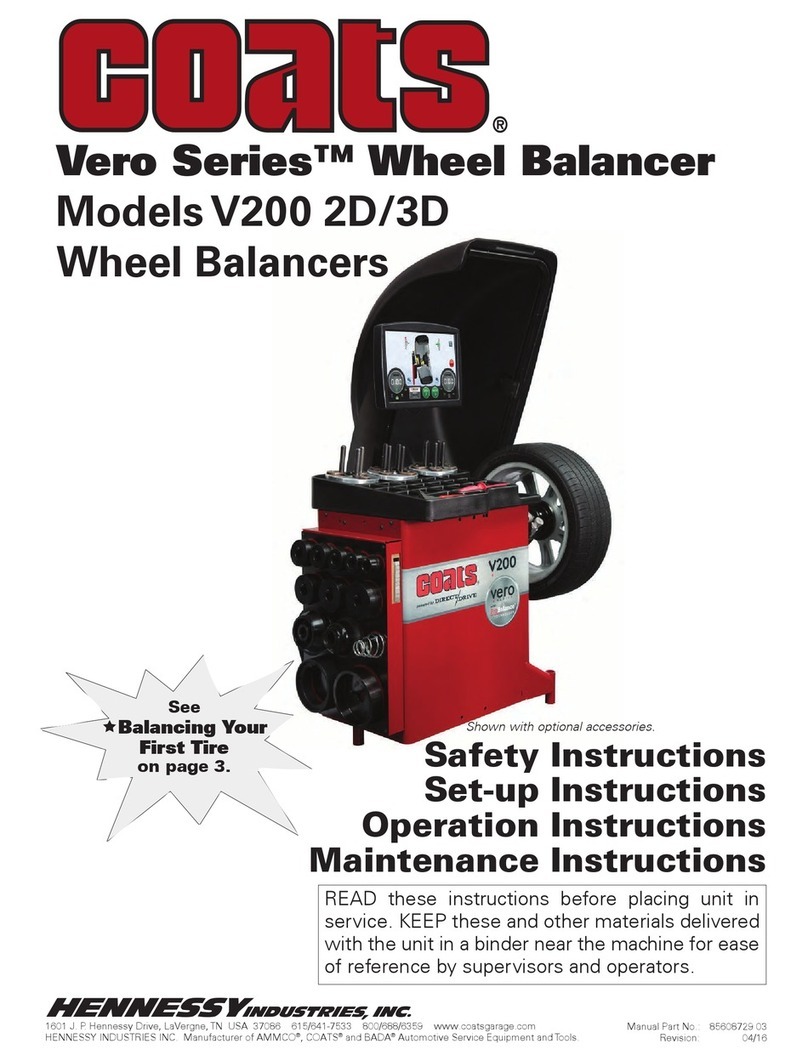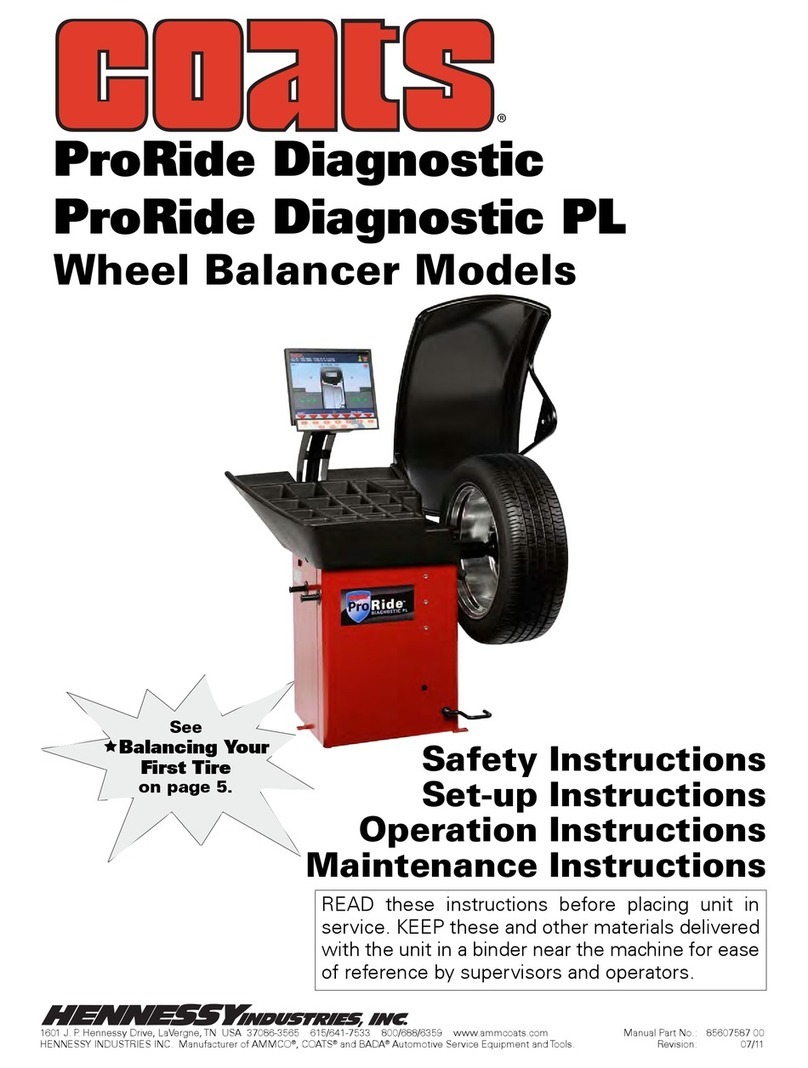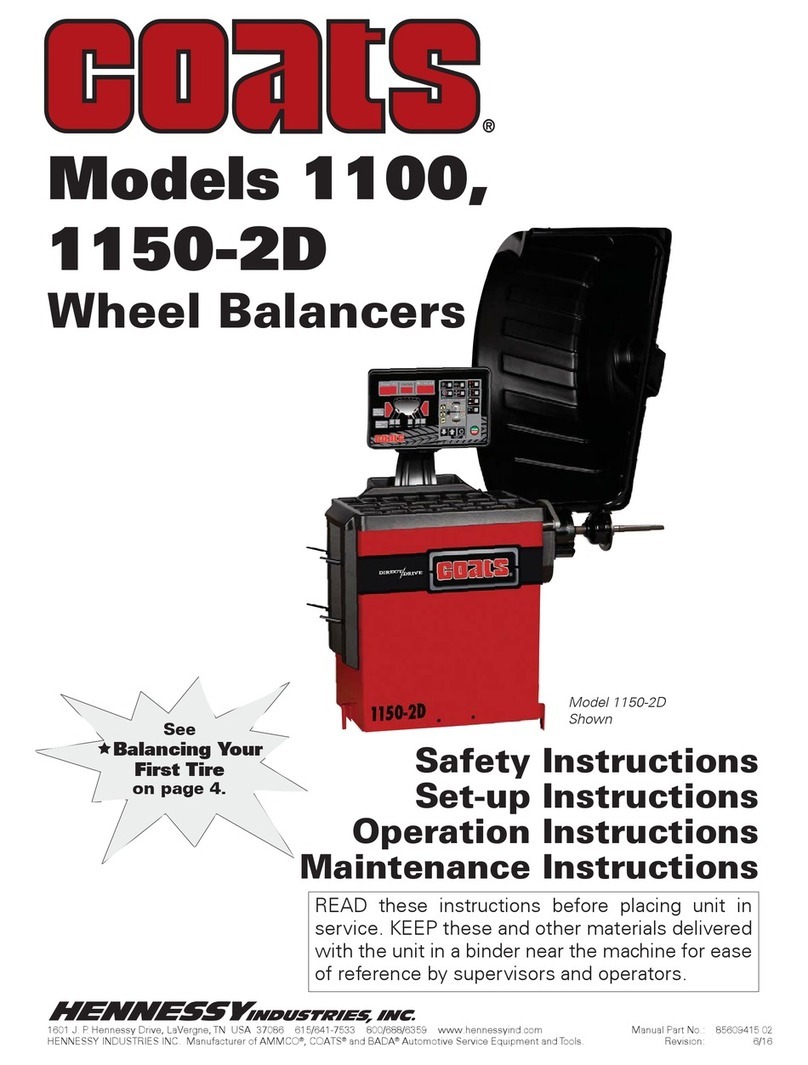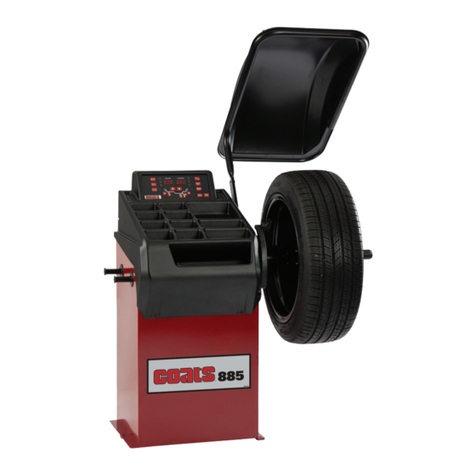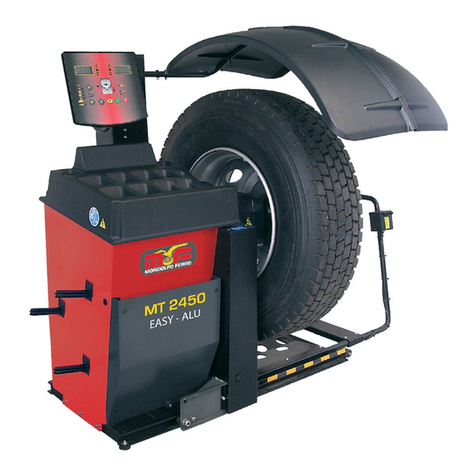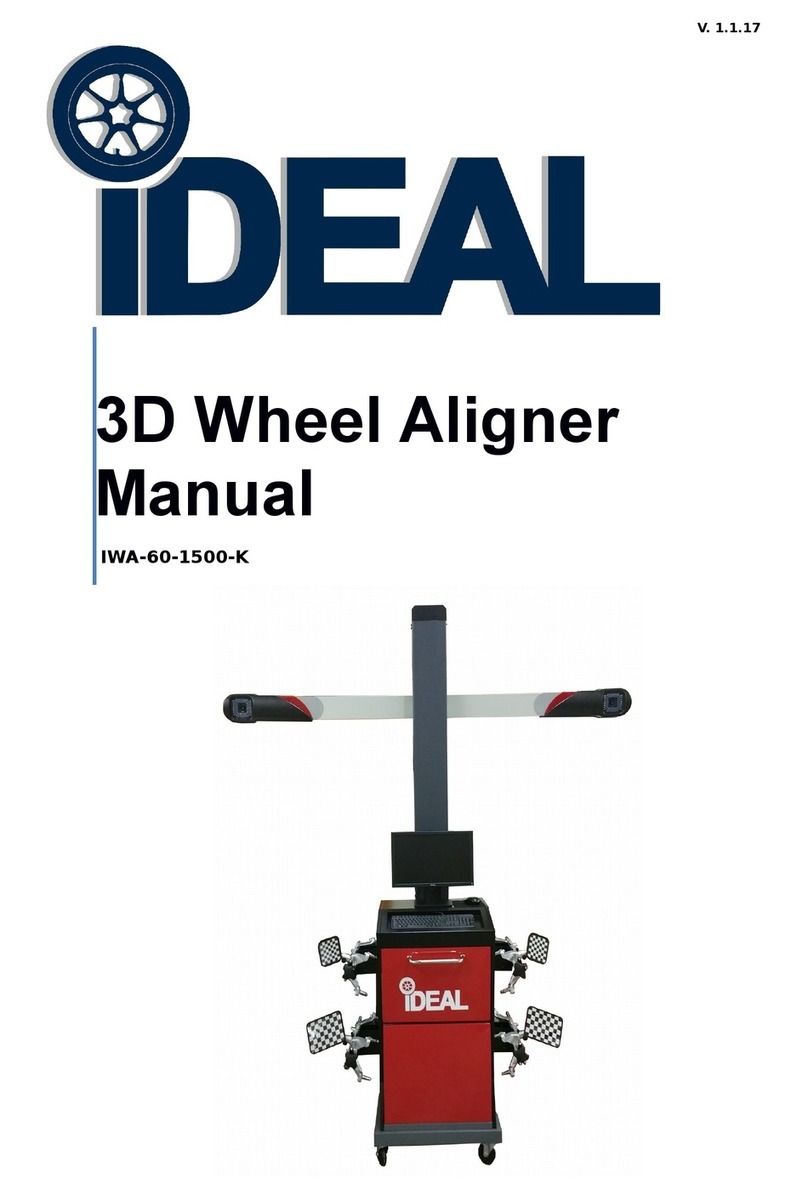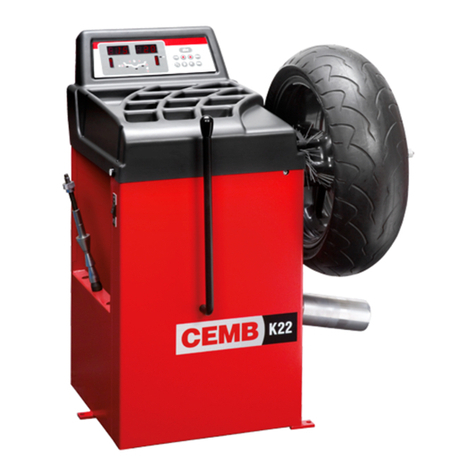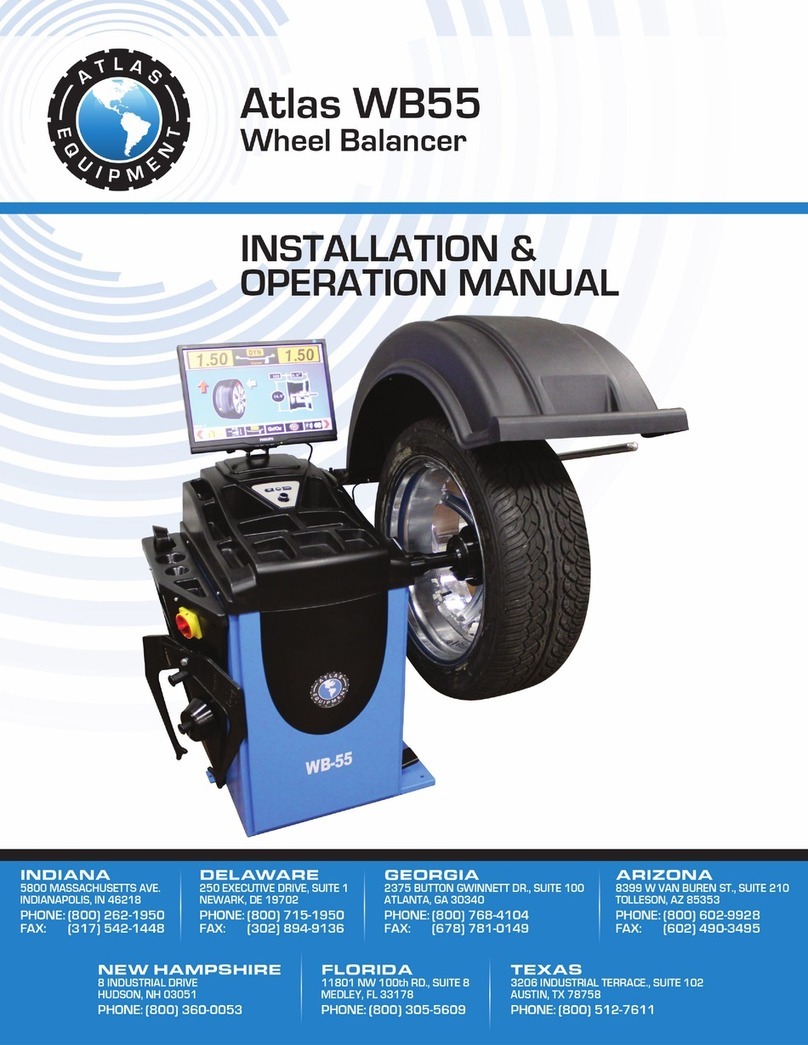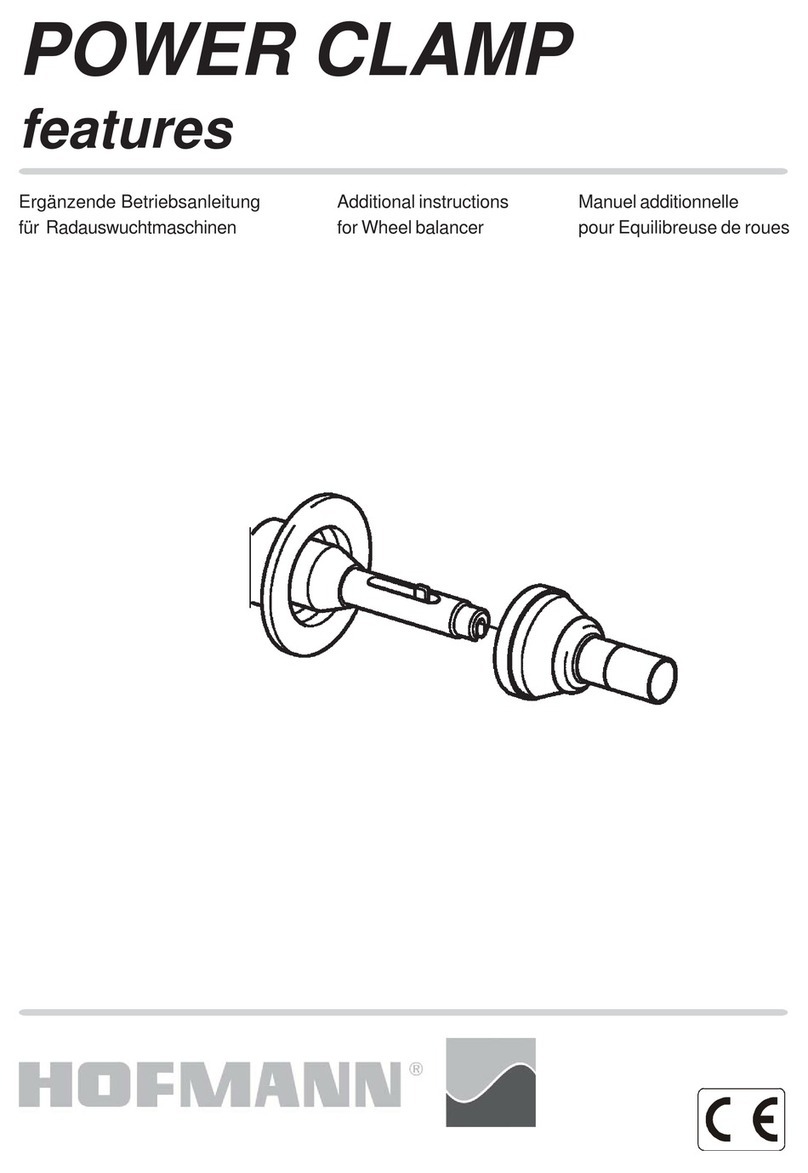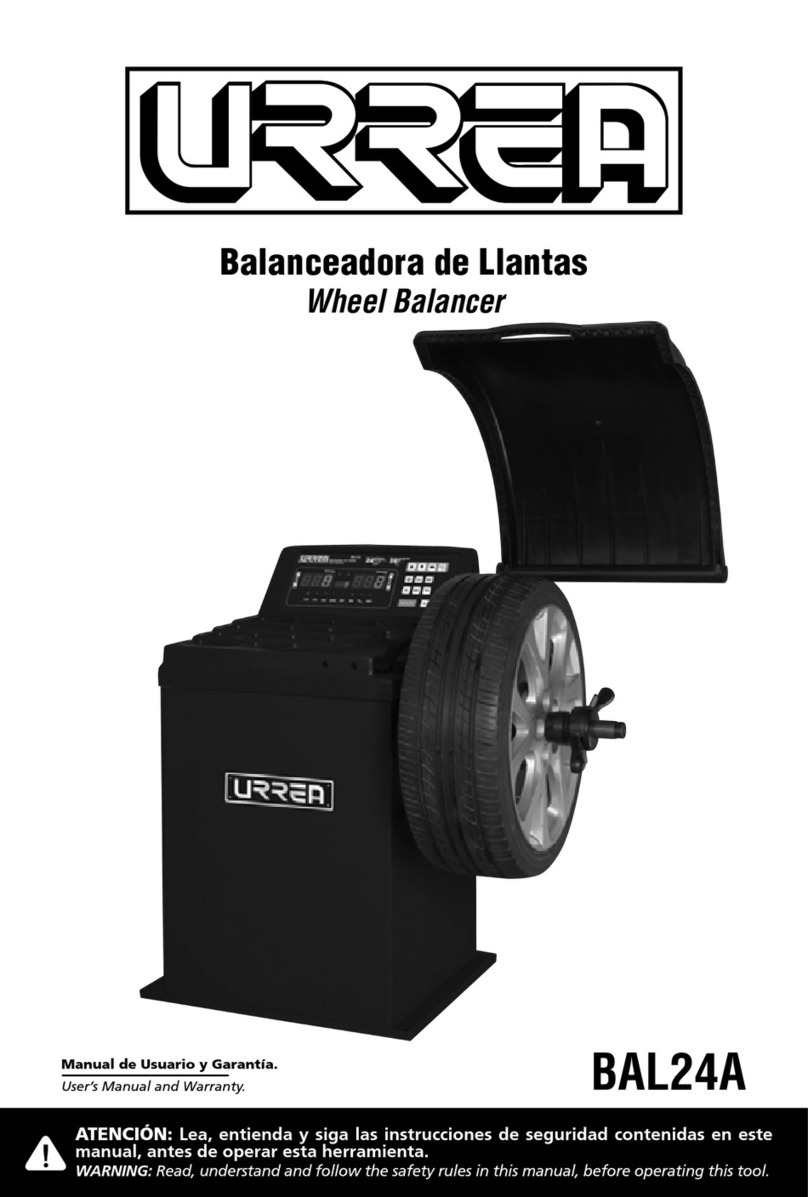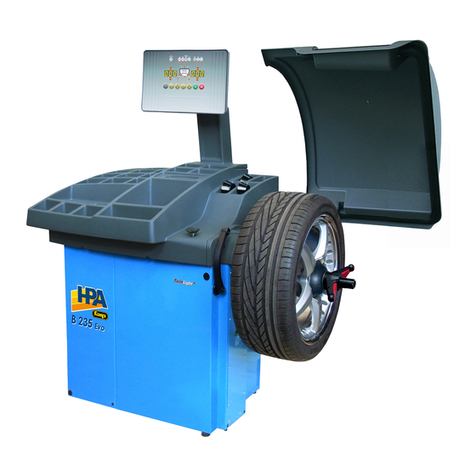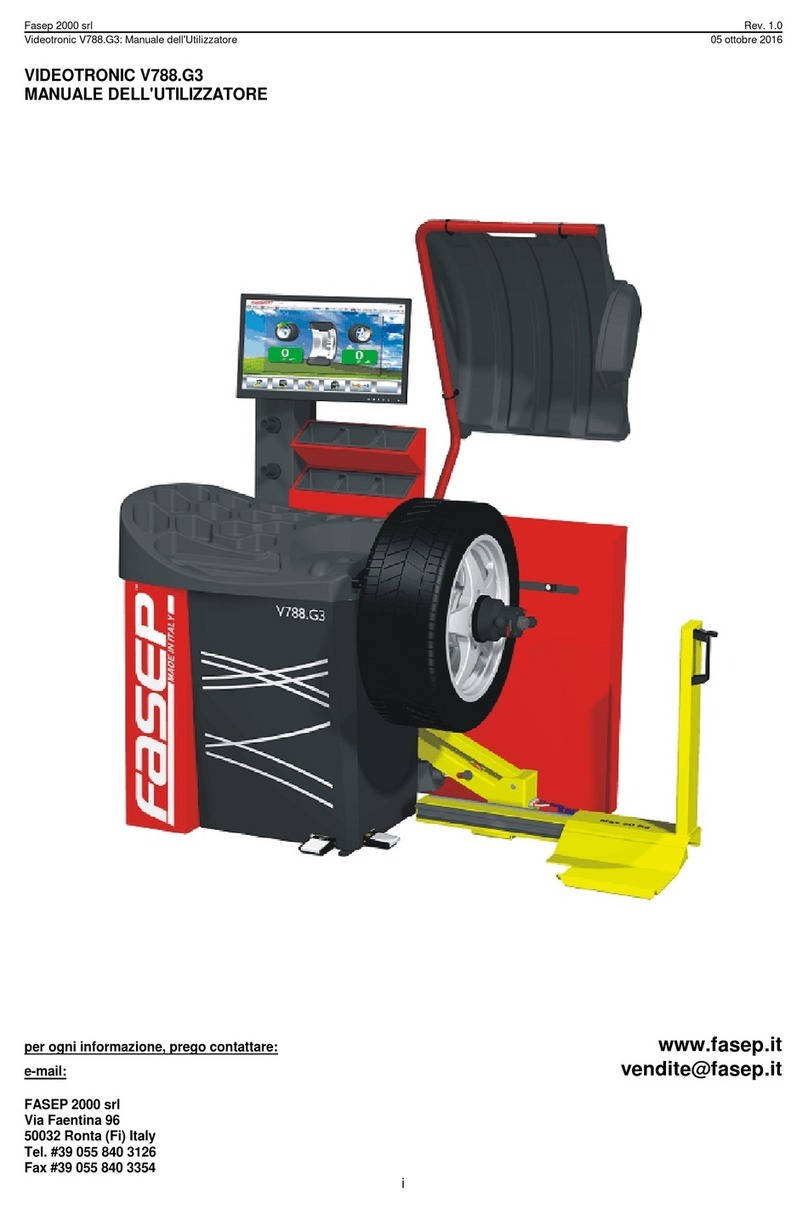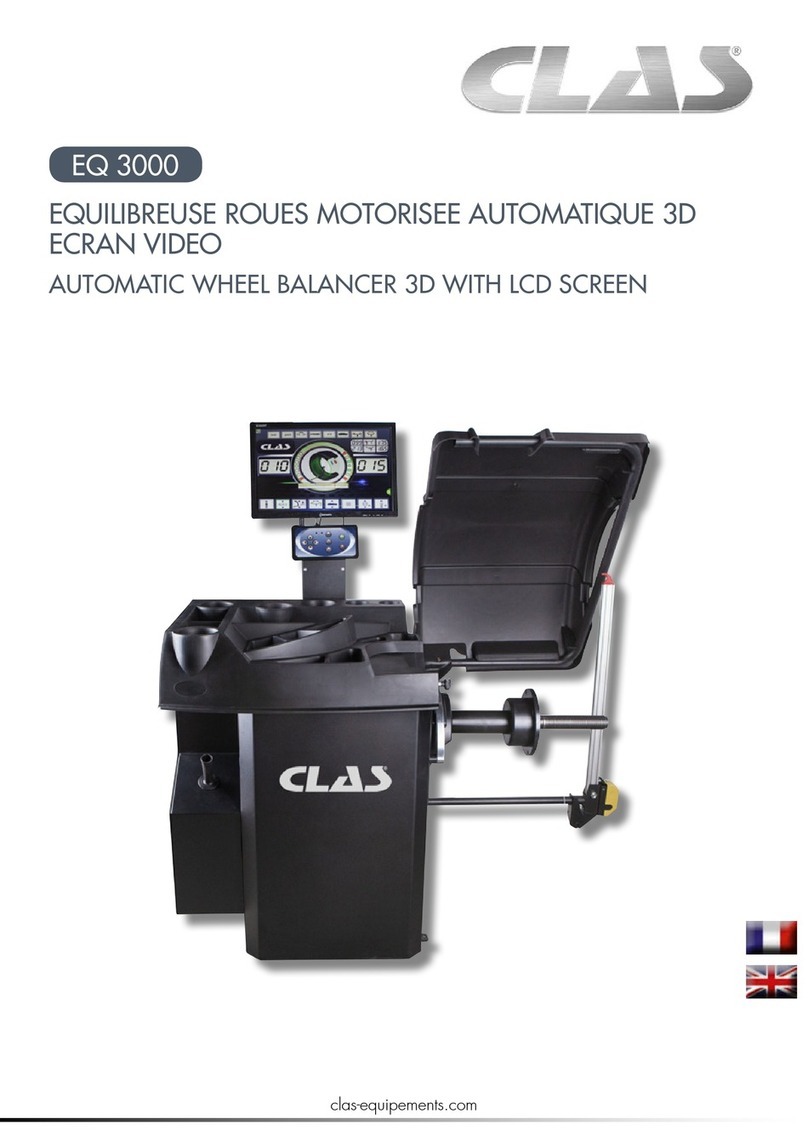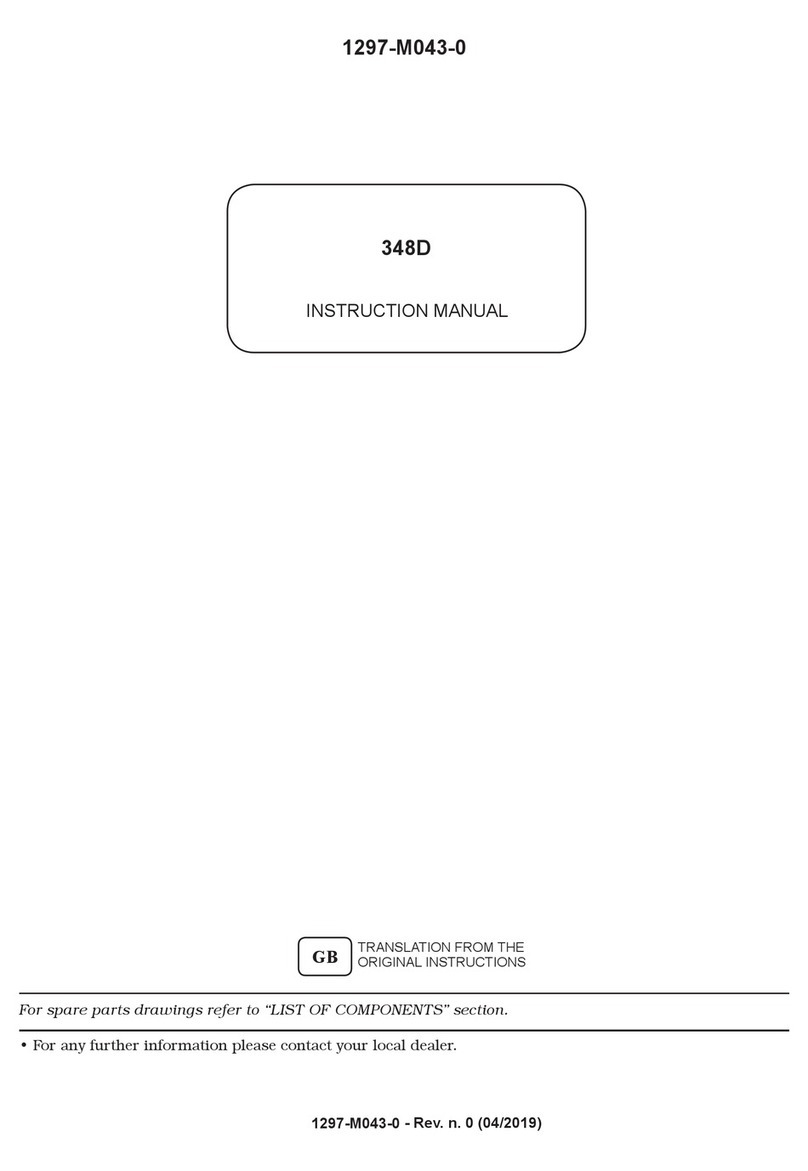
iv • Important: Always read and follow instructions.
READ ALL INSTRUCTIONS
1. Eye and face protection requirements:
“Protective eye and face equipment is required to
be used where there is a reasonable probability
of injury that can be prevented by the use of
such equipment.” O.S.H.A. 1910.133(a) Protective
goggles, safety glasses, or a face shield must be
provided by the owner and worn by the operator
of the equipment. Care should be taken to see
that all eye and face safety precautions are fol-
lowed by the operator. ALWAYS WEAR SAFETY
GLASSES. Everyday glasses only have impact
resistant lenses, they are not safety glasses.
2. Do not disable hood safety interlock system, or in
any way shortcut safety controls and operations.
3. Be sure that wheels are mounted properly, the
hub nut engages the arbor for not less than four
(4) turns, and the hub nut is firmly tightened
before spinning the wheel.
4. Read and understand this manual before operat-
ing. Abuse and misuse will shorten the functional
life.
5. Be sure the balancer is properly connected to the
power supply and electrically grounded.
6. Do not operate equipment with a damaged cord
or if the equipment has been dropped or dam-
aged – until it has been examined and repaired by
a qualified serviceman.
7. Do not let cord hang over edge of table, bench, or
counter or come in contact with hot manifolds or
moving fan blades.
8. If an extension cord is necessary, a cord with a
current rating equal to or more than that of the
equipment should be used. Cords rated for less
current than the equipment may overheat. Care
should be taken to arrange the cord so that it will
not be tripped over or pulled.
9. Keep guards and safety features in place and in
working order.
10. Wear proper clothing. Safety toe, non-slip foot-
wear and protective hair covering to contain hair
is recommended. Do not wear jewelry, loose
clothing, neckties, or gloves when operating the
balancer.
11. Keep work area clean and well lighted. Cluttered
and/or dark areas invite accidents.
12. Avoid dangerous environments. Do not use power
tools or electrical equipment in damp or wet loca-
tions, or expose them to rain.
13. Avoid unintentional starting. Be sure the balancer
is turned OFF and power disconnected before
servicing.
14. Disconnect the balancer before servicing.
15. Use only manufacturer’s recommended accesso-
ries. Improper accessories may result in personal
injury or property damage.
16. Repair or replace any part that is damaged or worn
and that may cause unsafe balancer operation. Do
not operate damaged equipment until it has been
examined and serviced by an authorized service
technician only. This unit contain no user service-
able parts.
17. Never overload or stand on the weight tray or any
part of the balancer.
18. Do not allow untrained persons to operate machin-
er y.
19. To reduce the risk of fire, do not operate equip-
ment in the vicinity of open containers or flam-
mable liquids (gasoline).
20. Adequate ventilation should be provided when
working on or operating internal combustion
engines.
21. Keep hair, loose clothing, fingers, and all parts of
body away from moving parts.
22. Use equipment only as described in this manual.
Do not modify the unit or remove protective cov-
ers or housings.
23. Use only manufacturer’s recommended attach-
ments and accessories.
24. The laser unit is not to be opened [except for
battery change (where applicable) or modified by
the customer, nor is it allowed to attempt to cheat
or defeat safety interlocks (where applicable)].
Never operate the laser if defective or cover/seal
is defective.
25. Do not point laser or allow laser light to be
directed or reflected toward other people or
reflective objects. Potential eye or skin exposure
to laser radiation exists if these instruction are not
followed.
IMPORTANT SAFETY INSTRUCTIONS
SAVE THESE INSTRUCTIONS
